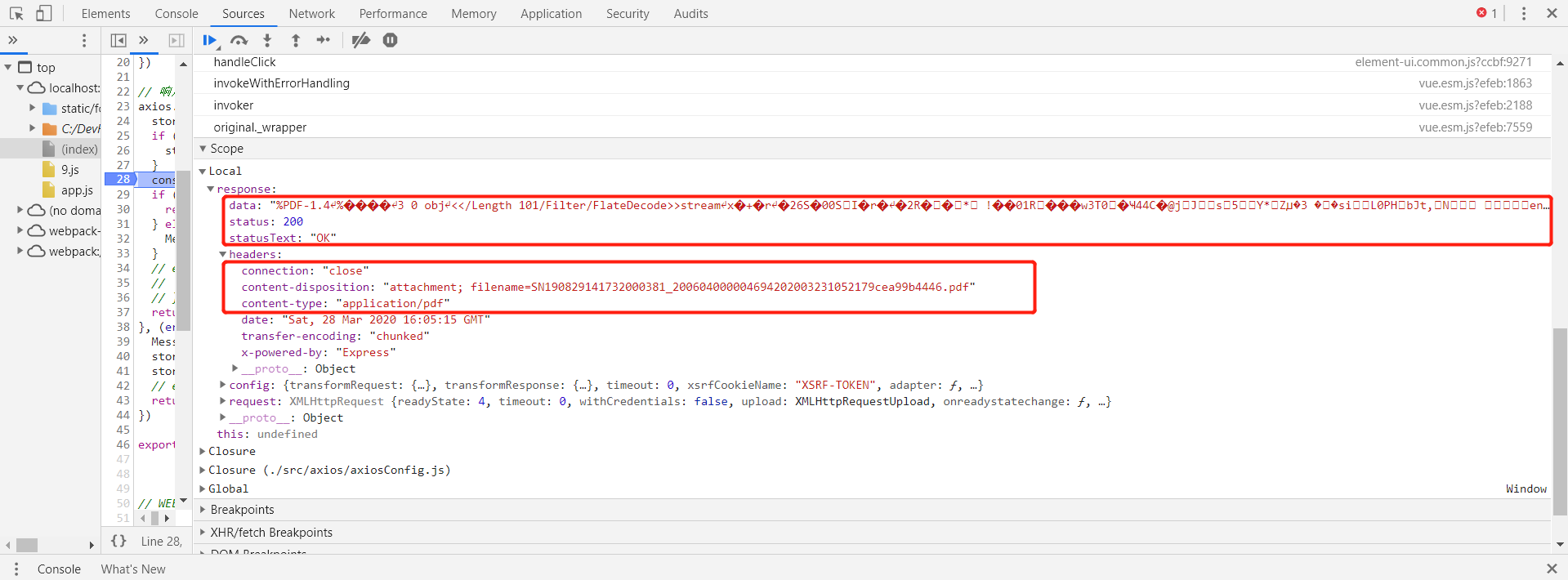一、背景介绍
Axios 是一个基于 Promise 的 HTTP 库,可以用在浏览器和 node.js 中。与传统的 Ajax 相比,Axios 的优势主要体现在: 支持 Promise API 、支持并发、支持请求与响应拦截、自动转换 JSON 数据、支持防御 XSRF、符合 MVVM 设计理念。在目前大火的前端框架 Vue 中也内置了 Axios 框架 。

正是因为 Axios 的数据处理为 json 格式,所以只能获取文件流,但不能给与正确处理。具体表现为:
response.status 与 repsponse.headers 与期望相同,但 response.data 为一团乱码- 浏览器没有自动下载文件

二、引入 Blob 容器实现文件下载
既然 Axios 无法正确处理文件流,便需要采用其他技术来达到预期效果。Blob 对象表示一个不可变、原始数据的类文件对象;从字面意思来看,Blob 也是一个可以存储二进制文件的容器。通过这项技术,可以完美地弥补 Axios 的不足。具体实现如下:
1
2
3
4
5
6
7
8
9
10
11
12
13
14
15
16
17
18
19
20
21
22
23
24
25
26
27
28
29
30
31
32
33
34
35
36
37
38
39
|
export function download (param) {
return axios({
url: '/web/bill/download',
method: 'post',
data: param,
responseType: 'blob'
})
}
download(this.param).then(response => {
this.exeDownloadFile(response)
})
exeDownloadFile (response) {
let blob = new Blob([response.data], {type: response.headers['content-type']})
let fileName = response.headers['content-disposition'].match(/filename=(.*)/)[1]
let href = window.URL.createObjectURL(blob)
let downloadElement = document.createElement('a')
downloadElement.style.display = 'none'
downloadElement.href = href
downloadElement.download = fileName
document.body.appendChild(downloadElement)
downloadElement.click()
document.body.removeChild(downloadElement)
window.URL.revokeObjectURL(href)
}
|
虽然以上可以实现文件下载,但美中不足的是,当后台返回异常时,通过 Blob 对象依然可以下载到一个 undefined 文件。因此,在执行下载之前,需要对下载请求是否存在异常做出判断。具体实现如下:
1
2
3
4
5
6
7
8
9
10
11
12
13
14
|
download(this.param).then(response => {
let fr = new FileReader()
fr.readAsText(response.data)
fr.onload = function () {
try {
let jsonRet = JSON.parse(this.result)
} catch (e) {
this.exeDownloadFile(response)
}
}
})
|
